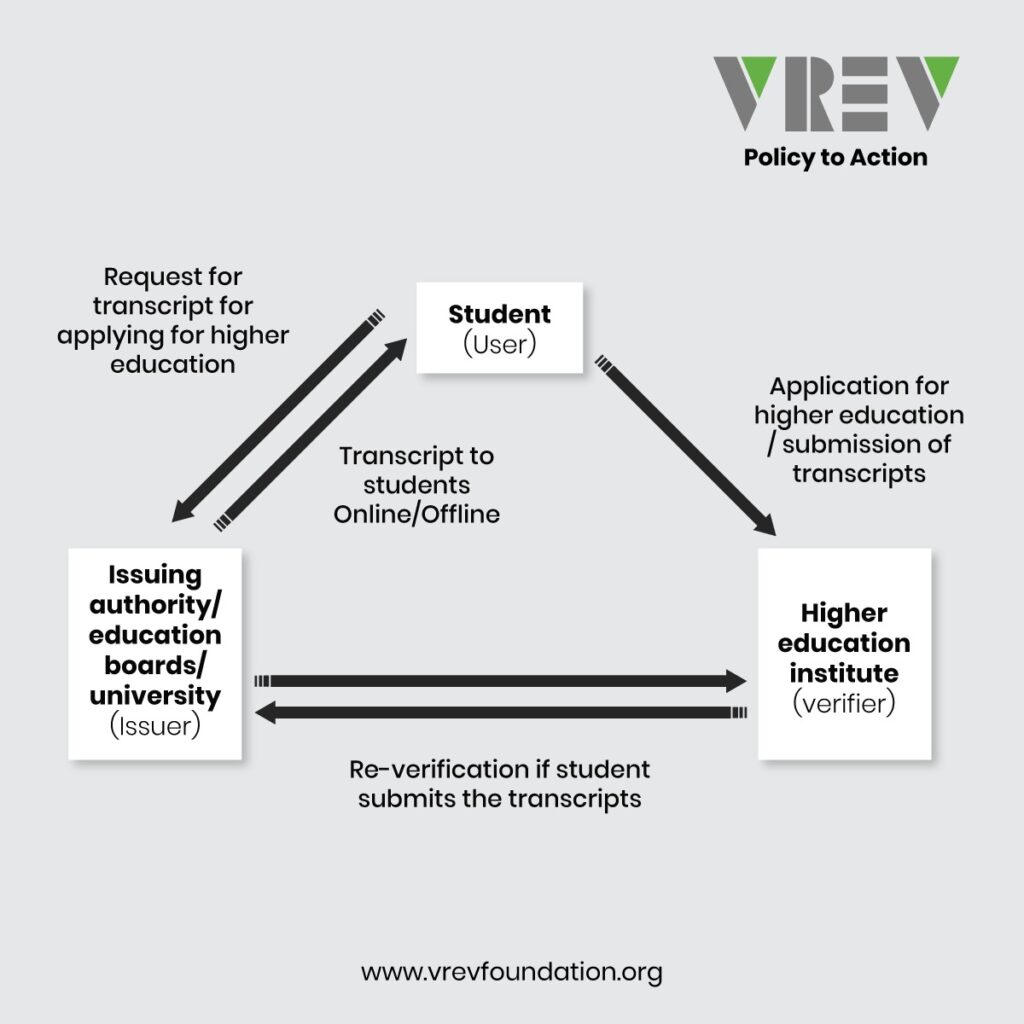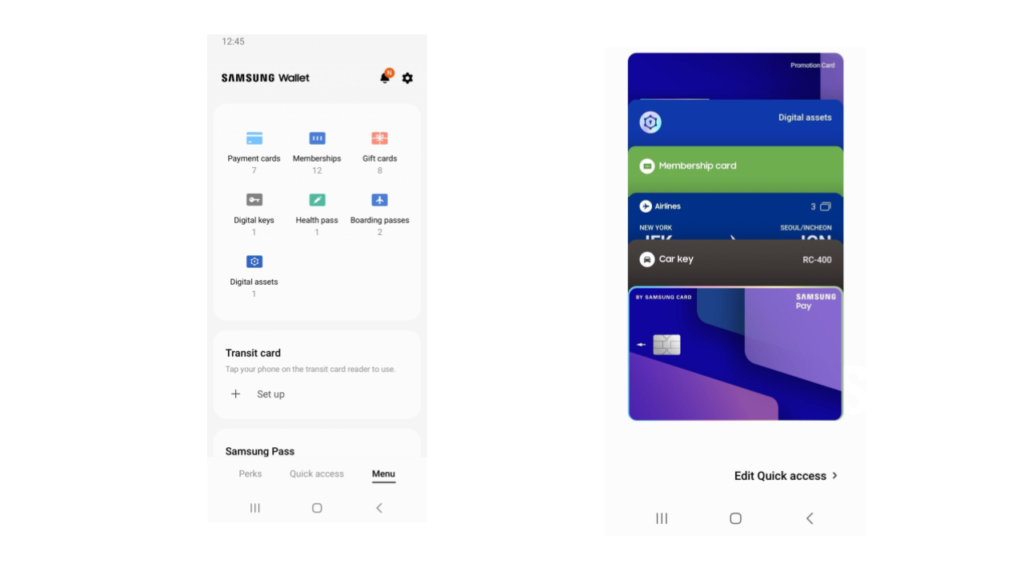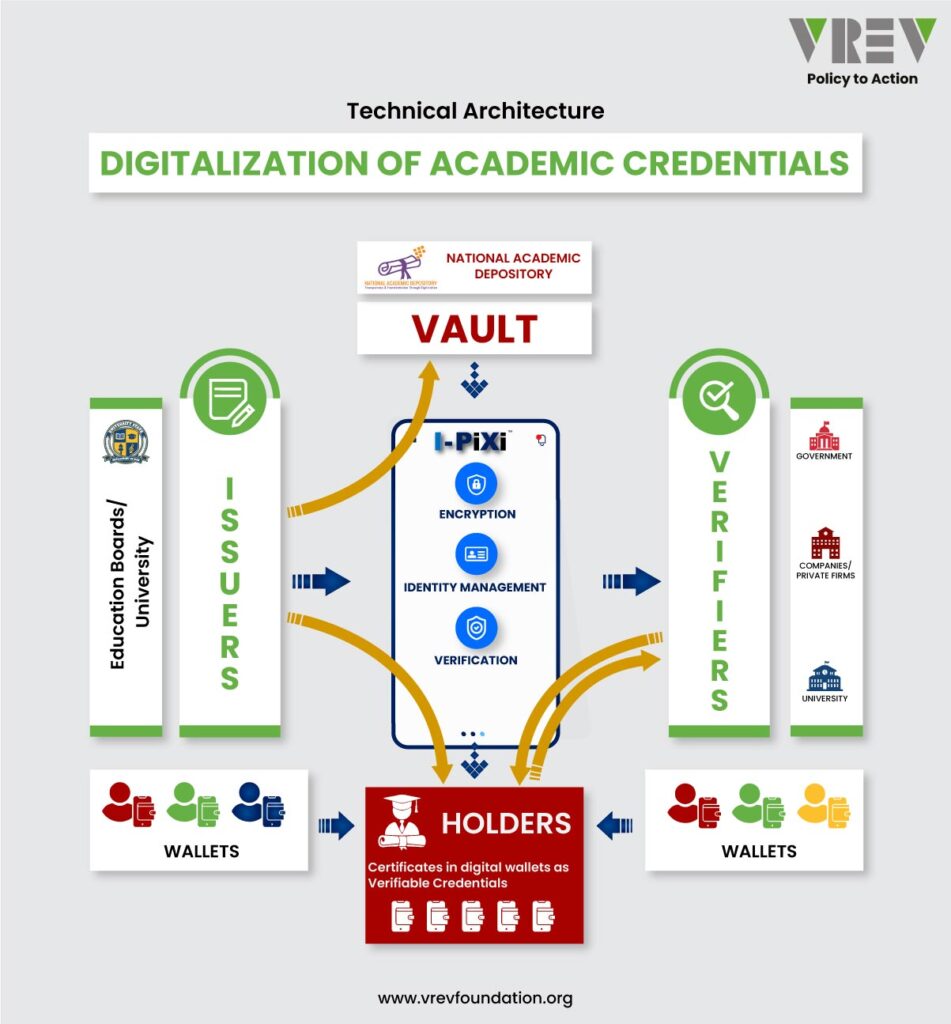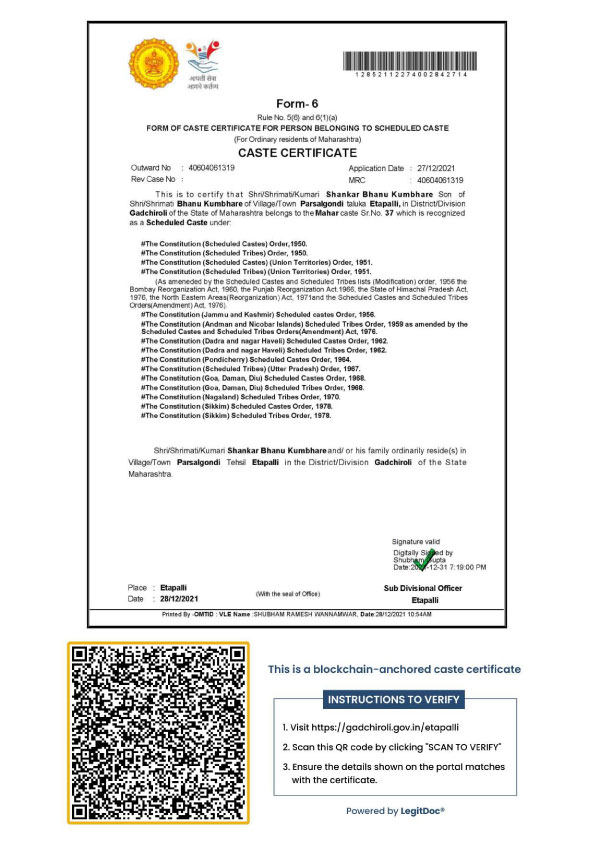Verification of academic credentials through Mobile digital wallets enabled on a public blockchain
Overview
Identity, often established by a Physical Card, Booklet or Certificate forms the basis of the interaction between an Applicant / Citizen and the Verifier / government. In this article, we review the possibilities of easing verification of credentials on a blockchain through simple, secure & customized mobile applications.
In India, there are multiple identities/ credentials that citizens need to possess to avail government and non-government services. Aadhaar, at ~1.35 Bn registration is an example of one of the foundational identities assigned to Indians with its purpose of providing – “transparent and targeted delivery of subsidies, benefits and services.”
There are 2 main issues when Identity is the basis of availing services – One is the ability to get the right identity credentials and Second is the ability to transact and avail services.
The advent of Web3 opens up numerous possibilities in improving ease of governance on a blockchain and India is poised to move to the next step in governance with the digitalization of these digitized identities. In this article, we will focus on the Second and within that specifically on a Welfare case study of Caste certificates and an Education case study on transcript verification enabled on a Blockchain. We will then review the possibilities of easing the verification process through leveraging Mobile digital wallets enabled by a Public Blockchain.
How does enabling caste certificate verification on a blockchain look – on a Paper issued certificate
India is enshrined as a welfare state with Government (State & Centre) being the largest service provider for ~1.35 Bn citizens. Within the population, Scheduled castes and Scheduled Tribes are those castes/races/tribes in the country that suffer from social, educational and economic backwardness and who need special consideration for safeguarding their interests. Governments provide welfare through multiple schemes ranging across economic, educational and social development for these segments of the population.
Caste certificates are issued to identified castes and tribal groups under the Scheduled caste and Scheduled tribe guidelines to enable them to access welfare schemes. Majority of the beneficiaries in this segment hold their caste certificates in the form of paper printouts. However, its challenging to authenticate and verify these documents.
A step towards improving the authentication process as well as easing welfare delivery has been initiated in this segment in Maharashtra by digitalizing these identities. The Maharashtra government is implementing a blockchain system to authenticate government-issued caste certificates in the Gadchiroli district of Maharashtra. This will enable entities to instantly authenticate the certificates with the help of immutable, publicly auditable data stored on the public blockchain.
Verification of Education certificate transcripts
Every year lakhs of Indian students apply to institutions for higher education in India and Abroad. In the State of Karnataka alone there were 4.46 lakh undergraduate students who enrolled in the 2021-22 academic year. This application process entails the steps of submission, verification and acceptance of education certificates involving multiple sub-steps. This can get further tedious with applications to multiple higher education institutions, involving significant cost and time investments. The reason for the time and cost is mainly to establish the authenticity of the certificates being submitted – verifying the issuer and the applicant.
The current process of transcript verification entails the below steps, at the least

Enabling certificate verification on a Mobile digital wallet
The mobile wallet of the future
Mobile wallets are transitioning in to “Digital ID wallets” that could be a one stop solution for not only payments but also ID verification and document management. By adding scanning and document encryption to their capabilities, digital ID wallets can be a secure virtual storage alternative to physical wallets. These Digital wallets will be able to store payment information along with other essential documents, including state IDs, passports, citizenship information, education records, medical records and even biometric information.

Is this something in the future? – NO
- IIT Kanpur developed an in-house blockchain based system to award digital degrees to the students under the National Blockchain Project. Students need to release the details of the degree and it can be verified from anywhere in the world, using the digital wallets of the IIT Kanpur.
- Samsung Digital Wallet is an app to store Digital IDs like a driver’s license, keep track of digital keys for things like a door or a car, secure your credit and debit cards, track your vaccination record etc.

Given the ground covered in the article so far, we come to the section on a Blockchain solution for certificate verification linked with a Mobile wallet
How does the transcript verification process look on a blockchain based mobile wallet enabled service
The process flow is as follows
Issue of certificates
- Issue – Certificate issued by an education board
- Digitized certificates stored in NAD (National Academic Depository) – this process is underway in Karnataka with participation by over 87 higher education institutions.
- Secure storage – Student stores the digitized credentials in the Mobile Digital Wallet. The wallet is a mobile application that can be used to store documents securely.
Application for higher education / hiring organisation
- Certificate storage on the student’s mobile wallet – The student has the original issued certificates stored in the mobile wallet in the form of a verifiable credential# (A global standard adopted by multiple organizations). Visually this can be depicted as an image and in the background the data resides in the form of a JSON object.
- Application form / Submission of wallet stored information
- On a Mobile
- User scans the QR code on the institute / organization’s website to initiate the application process
- User is asked to share / consent to access data from the wallet
- The application is auto filled with the credentials from the user’s wallet.
- Additional cross verification of information can be done. Example – Verify user Name and Date of birth from Aadhaar
- On a Desktop
- This can be similar to activating web WhatsApp.
- Additional verification with OTP can be done
- Once user is authenticated, the application is auto filled with the credentials from the user’s wallet.
- Additional cross verification of information can be done. Example – Verify user Name and Date of birth from Aadhaar
- The application is auto filled with the credentials from the user’s wallet.
- Additional cross verification of information can be done. Example – Verify user Name and Date of birth from Aadhaar
- This can be similar to activating web WhatsApp.
- On a Mobile
# Final verification – Verifiable Credentials (VC) are stored on the wallet and when shared the VC standard is used to verify the credentials being shared which is then back checked by the data on the public blockchain
Education certificate verification through a mobile wallet enabled on a Public Blockchain

As depicted in the above diagram, this mode of certificate / document verification can be extended to multiple domains including the entire welfare delivery of government schemes to beneficiaries across Caste, Class, Occupation, Demography and Geography.


